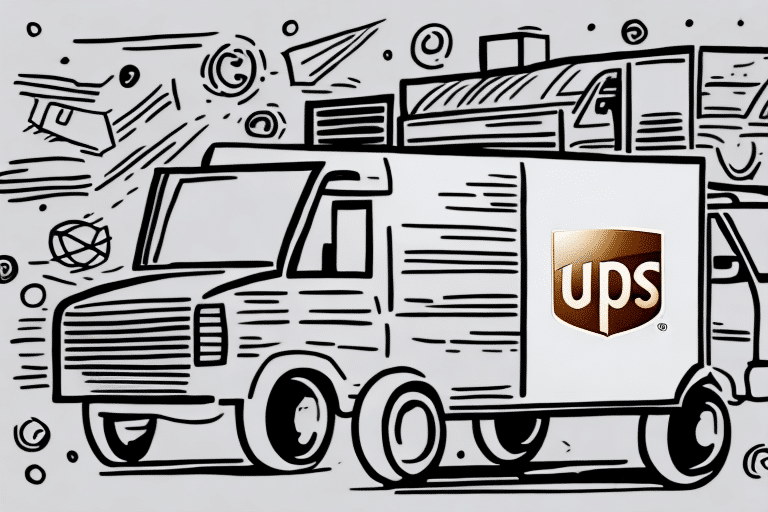How to Ship a Large Package with UPS Over 202 Inches: A Comprehensive Guide
Shipping a large package with UPS that exceeds 202 inches in combined length and girth can be a complex process. Whether you're a business or an individual, understanding UPS's regulations and procedures is essential for ensuring a smooth and successful shipment. This guide covers everything you need to know, from size and weight regulations to preparing, labeling, and tracking your package.
Understanding UPS Size and Weight Regulations
Size Restrictions
UPS imposes strict size limits on packages to ensure safe and efficient transportation. For packages exceeding 202 inches in combined length and girth, additional handling fees apply, and freight shipping may be required. Accurately measure your package and consult the latest UPS guidelines to determine the best shipping method.
Weight Limits
Packages weighing over 150 pounds typically require freight shipping services. Exceeding this weight limit not only affects shipping costs but may also necessitate special handling and transportation methods. For detailed information, refer to the UPS Rate and Service Guide.
Handling Hazardous Materials
UPS has stringent regulations for shipping hazardous materials, including chemicals and batteries. These items require special labeling and packaging, and compliance with both UPS guidelines and federal regulations is mandatory. Visit the UPS Hazardous Products page for detailed requirements.
Choosing the Right Shipping Option with UPS
Evaluating UPS Services
UPS offers various shipping services tailored to different needs, including freight options for oversized packages. Compare services like UPS Freight to find the most suitable option based on cost, delivery time, and package specifications.
Considering International Shipments
For international shipments, UPS may not always be the most cost-effective or efficient choice due to customs clearance and international regulations. Evaluate alternative providers such as FedEx or DHL for potentially better rates and services.
Assessing Package Fragility
If your package contains fragile or valuable items, selecting a provider with specialized handling services is critical. UPS offers various packaging options, but providers specializing in fragile shipments might offer enhanced protection and peace of mind.
Preparing Your Large Package for Shipment
Proper Packaging Materials
Use sturdy, corrugated cardboard boxes designed for shipping large items. Avoid using old or weakened boxes as they may not provide adequate protection. For heavy or oversized packages, consider using custom crates or pallets.
Securing Package Contents
Ensure that the contents are well-protected using cushioning materials like bubble wrap, foam peanuts, or sturdy dividers. Prevent movement within the package to avoid damage during transit. Tip: Distribute weight evenly to maintain package integrity.
Adhering to UPS Packaging Guidelines
Follow UPS's packaging guidelines meticulously to prevent delays or additional fees. Refer to the UPS Package Service Basics for specific instructions.
Labeling and Documenting Your Shipment
Accurate Labeling
Label your package clearly with the recipient’s full address and your return address. Use high-quality labels adhered securely to the package to prevent them from falling off during transit.
Comprehensive Documentation
Fill out all necessary shipping forms accurately, including any required declarations for international shipments. Accurately declaring the contents is especially important for customs and regulatory compliance.
Including Special Instructions
If your package requires special handling or delivery instructions, include these on both the label and the documentation to ensure UPS handles it appropriately.
Scheduling Pickup or Drop-off
Scheduling a UPS Pickup
You can schedule a pickup through the UPS website or by contacting customer service. Provide detailed instructions about the pickup location and any specific time requirements to ensure a smooth process.
Dropping Off at a UPS Location
Alternatively, you can drop off your package at a nearby UPS location. Check the UPS Drop-off Locations for hours of operation to plan your visit accordingly.
Tracking and Managing Your Shipment
Using UPS Tracking Services
Once your package is shipped, use the UPS tracking number to monitor its progress online. UPS's tracking tool provides real-time updates on your package's status and estimated delivery time.
Managing Delivery Notifications
Sign up for UPS My Choice to receive delivery alerts and have more control over delivery times and locations. This service can help you stay informed and make necessary adjustments if needed.
Handling Issues and Saving on Shipping Costs
Dealing with Shipping Delays and Issues
If you encounter delays or issues with your shipment, contact UPS customer service promptly. Provide your tracking number and detailed information about the problem to facilitate a swift resolution.
Cost-Saving Strategies
To save on shipping costs, compare rates across different UPS services and consider consolidating multiple packages when possible. Utilize UPS’s online tools to find discounts or business rates that may be available to you.
Exploring Alternative Shipping Options
If UPS does not meet your specific needs for shipping oversized packages, consider other carriers such as FedEx, DHL, or specialized freight services. Evaluate their pricing, services, and reliability to choose the best fit for your shipment.
Best Practices for Smooth Shipping
Adhering to best practices can significantly enhance your shipping experience. Properly package and label your items, utilize UPS's tracking and resources, and maintain clear communication with UPS support. Additionally, always review and follow UPS packaging and shipping guidelines to avoid common mistakes such as incorrect labeling or choosing inappropriate shipping methods.
Conclusion
Shipping large packages with UPS requires careful planning and adherence to their guidelines. By understanding size and weight regulations, choosing the right shipping options, preparing your package properly, and utilizing UPS’s tracking and support services, you can ensure a successful shipment. Always consider cost-saving strategies and evaluate alternative carriers to optimize your shipping experience.






















